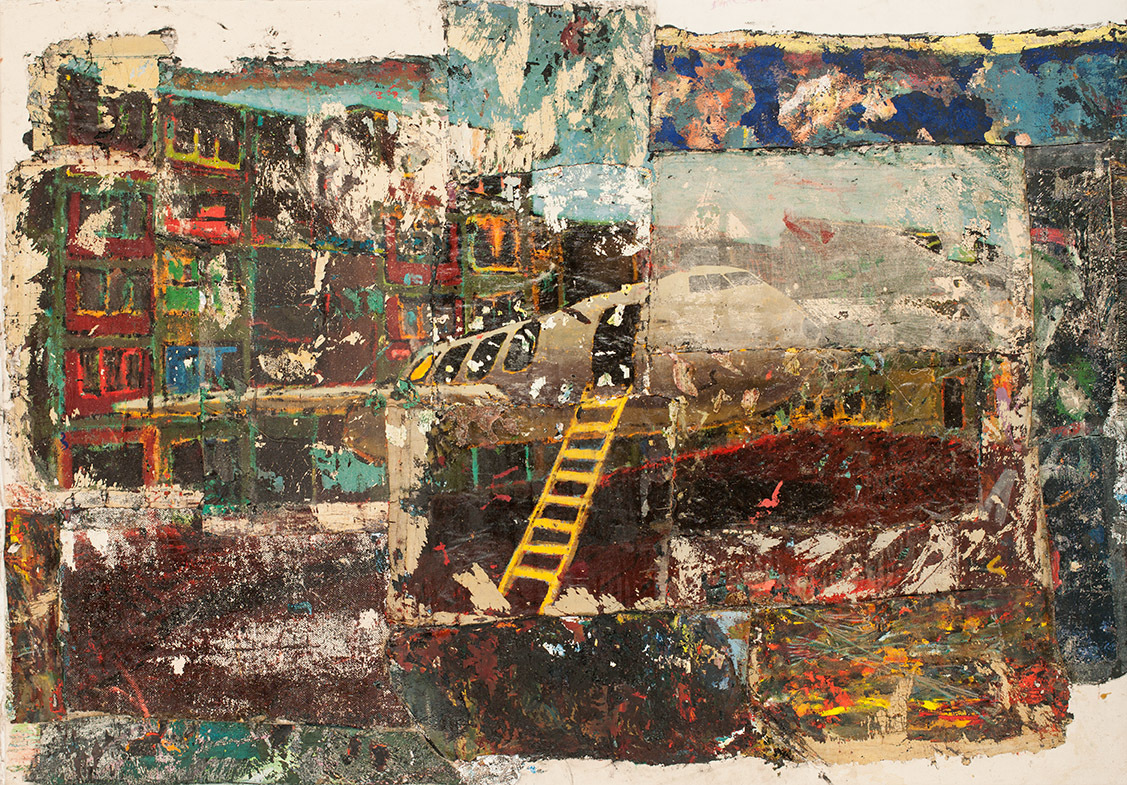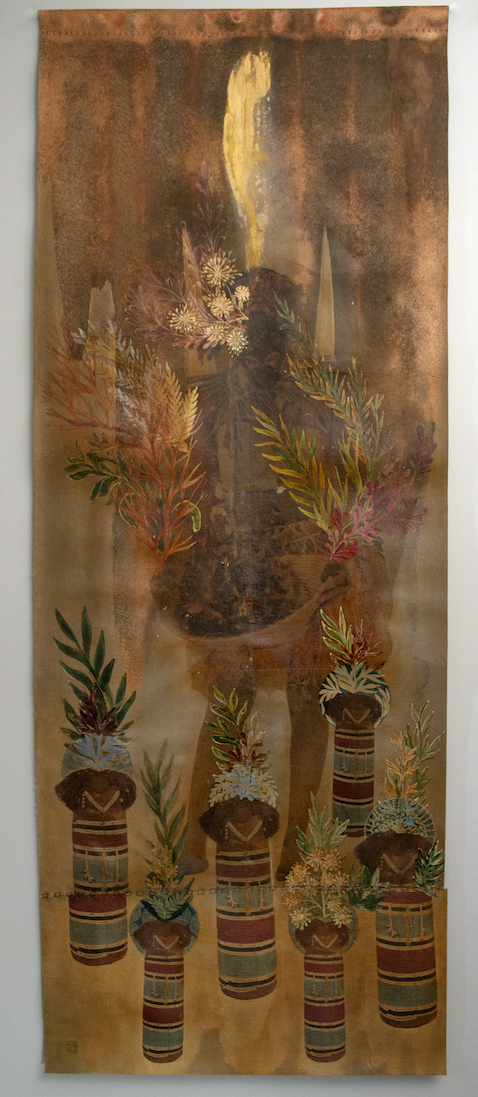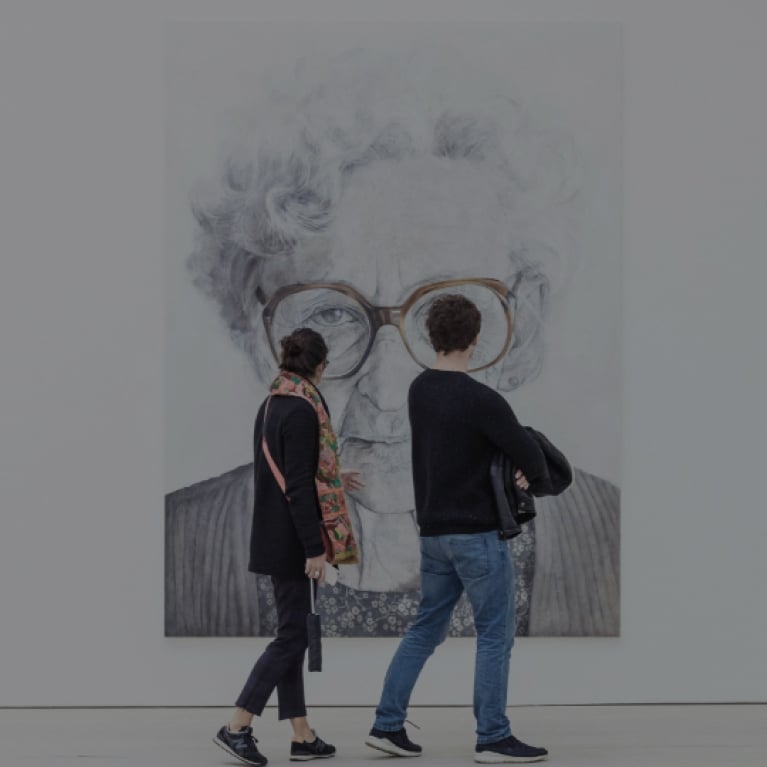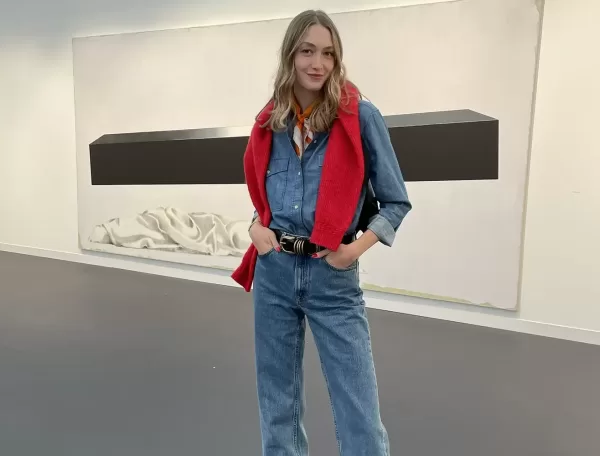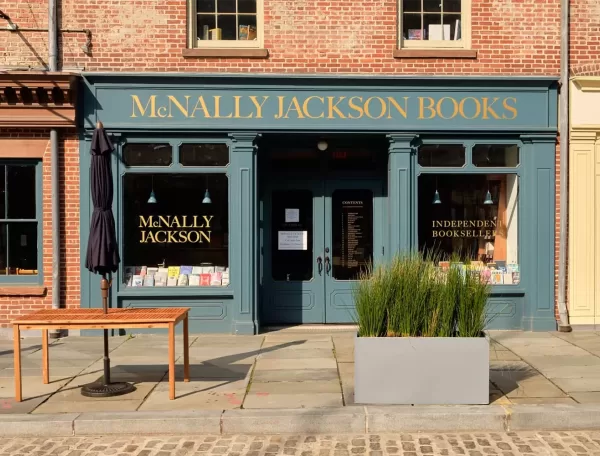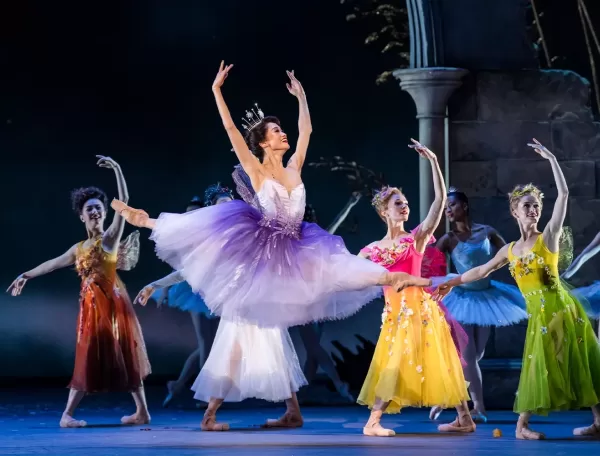As the only physical art fair taking place during Frieze week this October, 1-54 is a must-see highlight. Having established itself as a major voice in the conversation on contemporary African art over the past seven years, from 8–10th October, 28 international galleries will present work from more than 110 artists at Somerset House. Whilst you're there, we recommend keeping an eye out for the following five emerging artists.
Ermias Kifleyesus
Image at top: Ermias Kifleyesus, Addis London, Oil on Canvas, 2020. Image courtesy of Addis Fine Art.
Gallery: Addis Fine Art, Booth W13
Ethiopian multidisciplinary artist Ermias Kifleyesus (b. 1974) interrogates the prevalent Western viewpoint of African history and its omission of the truths of colonisation. Using discarded paintings he finds in Amsterdam's second-hand markets, Kifleyesus deconstructs them, burying and unravelling their surfaces to evoke the act of uncovering obscured layers of history that facilitated Western dominance, such as the theft of natural resources and human oppression.
His intricate and labour-intensive process encourages viewers to look beyond the exterior and explore new perspectives, questioning historical notions that have been accepted as the objective reality.
Tsedaye Makonnen
Image above: Tsedaye Makonnen, Senait & Nahom. The Peacemaker & The Comforter, 2019, Installation made of 50 lightboxes. Copyright of the artist.
Gallery: Addis Fine Art, Booth W13
Tsedaye Makonnen (b. 1984) is an Ethiopian-American multidisciplinary artist, curator and researcher. Her practice explores the history of forced migration of Black communities across the globe and Feminist theory, rooted in her personal experience of being a daughter of Ethiopian immigrants, a Black American woman, a doula and a mother.
Makonnen's performances and immersive installations, which she refers to as light monuments, employ mirror materials that create a space to honour moments of profound loss that the Black community continues to endure. For the artist, they are powerful yet beautiful memorials of the Black women whose lives were tragically cut short and those who have been the matriarchs of society.
Armand Boua
Image above: Armand Boua, La gomie, 2019, Acrylic & collage on linen. Image courtesy of Jack Bell Gallery.
Gallery: Jack Bell Gallery, Booth W11
Armond Boua's (b. 1978) practice is influenced by the violence and instability which followed the 2010 disputed presidential election in Abidjan, the largest city in the Ivory Coast and his birthplace. Boua witnessed firsthand the escalation of the political turmoil, which led to the painful separation of many families. Finding themselves in a catch-22, vulnerable children had to choose between living in the deprived conditions of the over-populated slums or the miserable plight of life on the streets.
Boua's textured paintings and collages, comprising of found materials from the city's streets, depict the fragmented silhouettes of these forgotten children. The artist builds up his compositions by applying and stripping away layers of paint and debris, echoing the frailty that characterises his subjects' lives. Poignant and sensitive, Boua's work is a timely manifestation of remembrance and defiance in the face of the fate of obscurity.
Tuli Mekondjo
Image above: Tuli Mekondjo, Oilya oihapu, neengobe dihapu, noludalo lihapu (May we have much grain, many cattle and many births), 2020, Mixed Media on Canvas. Image courtesy of Guns & Rain Gallery.
Gallery: Guns & Rain, Booth W10
Angolan artist Tuli Mekondjo (b. 1982) creates earthly mixed media compositions using embroidery, collage, paint and mahangu grain – a Namibian food staple. Drawing on photographic archives as source material, Mekondjo expresses the history of loss and obliteration of native cultural practices resulting from the Namibian independence war and life in exile, which she experienced firsthand during her childhood.
Her rich and textural canvases portray veiled figures amidst an abundant arrangement of botanical vines and flowers, touching upon themes of fertility, proximity to nature, ancestry, ritual, displacement and gendered struggle.
Dominic Chambers
Image above: Dominic Chambers, Something Came To Me, 2019, Oil and spray paint on canvas. Courtesy of Luce Gallery.
Gallery: Luce Gallery, Booth E7
Dominic Chambers's (b. 1993) luscious paintings depict black figures lounging in vivid landscapes, exploring the relationship between reality and fantasy. Drawing on references from literature and African American history, the artist sensitively presents his characters in intimate settings of contemplation and stillness. His dreamlike compositions combine portraiture with gestural brushstrokes, yielding bizarre and surreal scenes, that are at the same time quiet yet filled with vibrancy and life.










